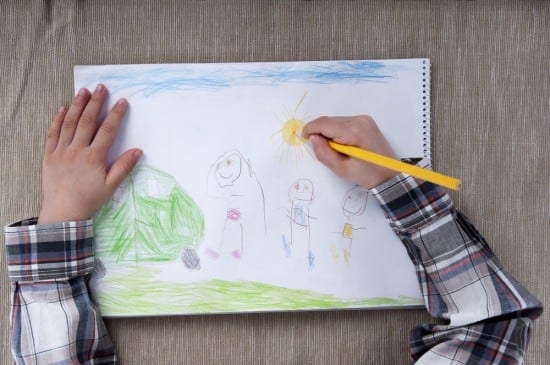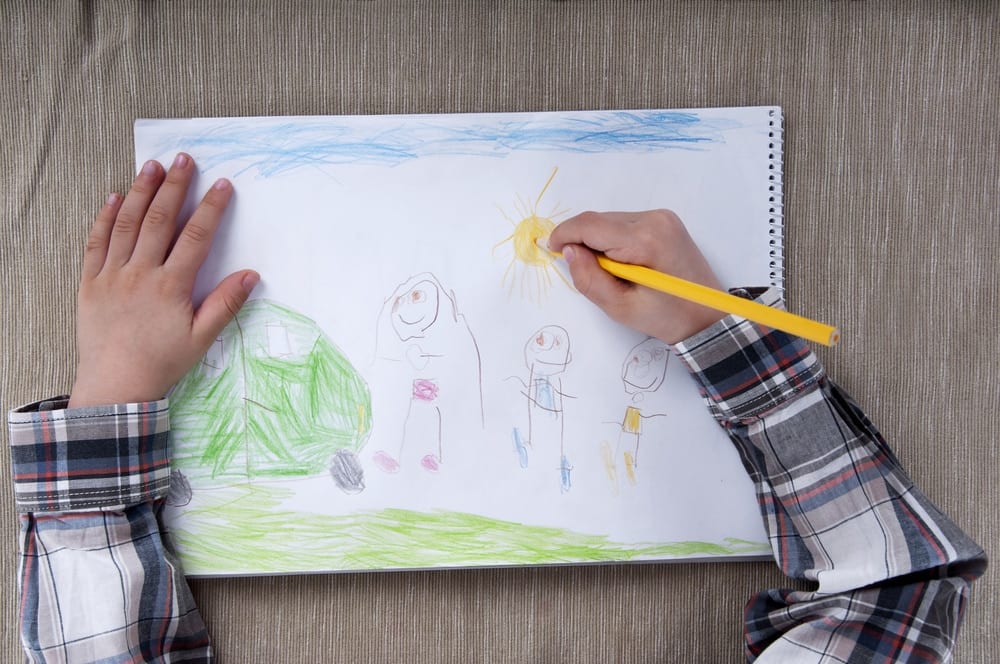
More and more, children are starting school without basic fine motor skills. Fine motor skills are used to do tasks like using a marker, cutting out and gluing shapes, or to hold the paper still while cutting it up with a scissors or drawing on it with crayons. These are skills that should have been mastered in advance of starting school, yet teachers are finding that first graders lack fine motor skills: the skills they need to begin learning.
Because these critical skills are missing, teachers must take time away from preplanned teaching schedules to get their students up to scratch. This wastes time and money that could be better spent.
How so?
Well, for one thing, first graders who lack fine motor skills must constantly have their hands guided and corrected. Moreover, often, these students haven’t developed the strength in their hands and the coordination required to use a pair of scissors. Finally, such students may need to be taken out of class for individual help which may force them to miss out on class work and can end up costing school districts significant sums of money.
First Graders Lack Fine Motor Skills Because Velcro!
How pervasive is this problem? And what is the reason that first graders lack fine motor skills? April Whitlock markets Fundanoodle educational products for preschoolers and spends her days chatting with preschool and kindergarten teachers. “I have heard firsthand how students struggle with cutting, holding a pencil properly, and even folding. There are many factors to blame for the increasing number of children with under-developed motor skills. Technology, including using touch screens at a young age, is a huge factor but so is our culture of convenience with Velcro shoes and squeezable food,” says Whitlock.
If you’re the parent of a preschooler, you may be wondering what specific skills children are supposed to master before first grade. “Children entering kindergarten [are] expected to master letter formation with upper case letters and by first grade master lower case letter formation as well. Many children coming into school are not explicitly taught these skills.
“Teachers must set aside time now for teaching shoe-tying, how to use scissors, and how to grip a pencil. Parents can help by playing games that involve digital manipulation, i.e. pick up sticks; moving a game piece around a board; working with play-doh, or with building blocks,” says Anita Perry, an educator and fitness expert who spent many years as a first and second grade classroom teacher. “Many parents mistakenly believe that video games meet this need, but in my experience actually delay fine motor development.”
Monique M. C. Prince feels that preschool is already late in the game for addressing the acquisition of fine motor skills and takes an environmental approach. “Proper development comes from parenting practices which are child-centered from the beginning of conception. When children are physically and emotionally deprived or punished in their environments, they will not develop properly. Fine motor skills are not necessarily taught, so much as they develop from the child receiving everything the child needs early on which allows the muscle development to occur in a healthy way,” says Prince, a Clinical Social Worker, Parenting Coach, and GAPS clinician.
“My oldest child is adopted and lived in an orphanage as an infant, which is the extreme case of neglect. He still, at 14 years old has much difficulty with any fine motor skill task. My youngest daughter (by birth) who received all attachment-style parenting such as extended breast feeding, co-sleeping, never neglected or even left to cry, never punished, and received exclusively organic foods from before conception developed her fine motor skills as an infant and still excels in that area and in all areas actually.”
“Today, most children are fed toxic formula, left to cry it out, then fed toxic grain products, then fed toxic, fat-free foods, and then they are shoved into time-outs because they have no self-control and secure attachment. It’s a recipe for failure and that is where our American culture is at, and our poor teachers are left trying to fix these things after a disaster at their students’ homes.”
“Environment is everything for a child to develop to his/her full potential and it starts before conception,” says Prince.
Joanie B. Connell, Ph.D., says the problem is that children aren’t getting enough playtime during the early years. “Parents place them in structured activities, like sports, music, and even academic learning. Toys are also getting less creative. For example, kits for art projects and Lego projects come with instructions and ready-made pieces, and kids aren’t manipulating things as much as they used to,” says Connell, who has a doctorate in psychology and a bachelor’s degree in engineering from Harvard.
Environment may be a factor in how a child’s fine motor skills evolve, but technology is also a factor. One small scale Philadelphia study found that ¾ of the parent participants had given their children electronic devices such as tablets, smartphones or iPods, by the age of four. Kids may be swiping screens or pushing buttons, but these activities are a poor substitute for drawing with crayons or markers, cutting out paper dolls, or modeling clay.
Have you got a little one who’s not quite school age? There’s a lot you can do at home to get your child up to scratch. First of all, cut way down on access to technology. That’s right: take away your child’s tablet, iPhone, or other hand-held device. Once you do that, there are many practical steps you can take to help your child develop coordination and hand-strength:
- Play with playdoh
- Put a puzzle together
- Cut paper with a child’s safety scissors
- Build Lego
- Use alphabet magnets to form the child’s name and simple words (think of your refrigerator as a canvas!)
- String cheerios onto a string to make an (edible!) bracelet
- Twist pipe cleaners into funny shapes or animals
- Play dress up, which gives children practice in putting on and taking off gloves and coats, zipping zippers, buttoning buttons, snapping snaps, and tying shoes.
- Use a coloring book to practice coloring within the lines
- Squeeze colored glitter glue over the lines in a coloring book, or fill in the shapes with paint, using short circular painting strokes.
Is your child struggling with fine motor skills in school? What are you doing to help your child build hand-strength and coordination?
